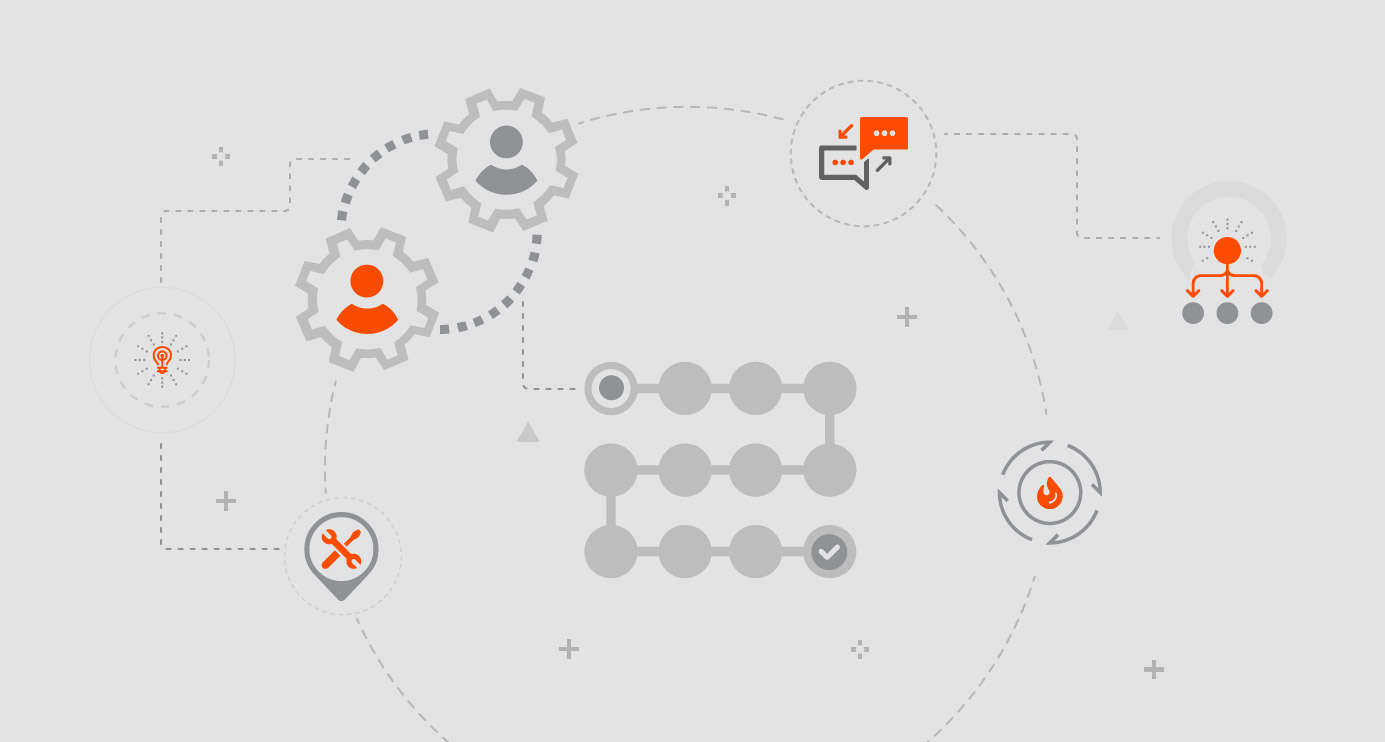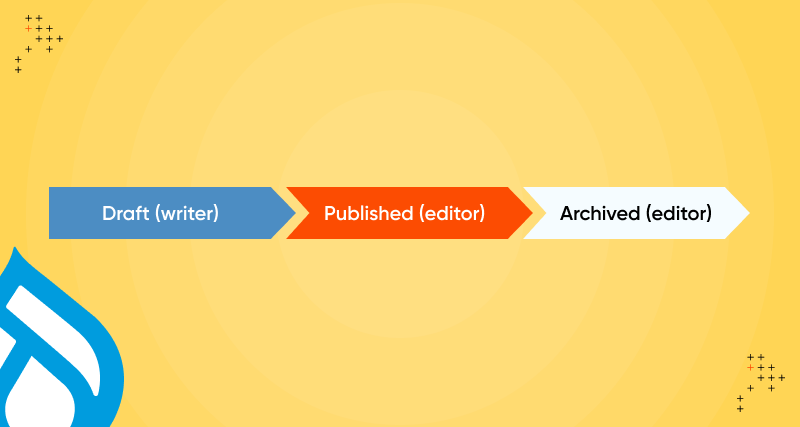Introduction
Rather than looking at Drupal partner relationships as time-limited engagements, at Axelerant, we look at every partnership as a long-term commitment. As such, we want our partners as well as our team members to begin with an accurate high-level view of the partnership.
At the outset of an agency partnership, we look to establish a common understanding of partner agency success. We conduct detailed workshops in order to address any concerns that they may have, and identify any particular problems they’ve experienced in the past that they’d like to see resolved.
We do this because we know that there is no one-size-fits-all solution that we can offer our partners. We know that the ultimate value of a partnership is in the return on investment (ROI) that we are able to deliver back to the client agency. And that emerges from a shared understanding of success.
If you don’t have a general idea of what your “journey” looks like with your implementation partner, you’re on the road to nowhere. This is why we focus on accurately identifying the long-term value we can help unlock for our partners.
How do we arrive at an accurate picture of what constitutes long-term value for another agency?
By mapping partner success journeys at the beginning of the engagement. This partner journey then acts as a representation of all the different experiences that a partner can expect to have while working with us.
Defining the journey
No two partners’ requirements and expectations are the same, so by nature each partner journey is contextual and custom. Different agencies may have different ways of working. There can be differences in time zone, culture, personalities, capabilities, and geography.
We aim to identify the actual needs and concerns that our partners have experienced as closely as possible, and then map our capabilities and team members onto those, bringing all stakeholders into alignment through a tailored mapping process.
For us, the key word has always been empathy. We’ve put partner agency success at the center of everything we do, and reoriented around it with empathy forming the center of the value system.
Our partners are not just records in a CRM. We believe that a partner journey needs to be well thought out at a human level, and tailored to suit each partner by understanding what they go through and what their needs are.
That’s how we make this process unique and customizable to each of our partners. We begin with an initial, generic partner journey, and then tailor it as per our growing understanding of our partners’ needs.
The journey is a visual representation of what the customer experiences. The visual representation with crests and troughs ultimately tells the story of what we are doing well (meeting goals, exceeding expectations) and where we need to do more (pain points, challenges, roadblocks).
The most important element for us is identifying these crests and troughs correctly—so that we can then dynamically adapt the journey, elevate the lows, and create customer delight.
Partner journeys are works in progress. Just as you get to know a new hire over a period of time while working with them, so also you get to understand your partner’s concerns more deeply after you start working alongside them. We use this understanding to adjust the partner journey to more accurately reflect their goals.
And these goals can always change. This is why we have frequent touchpoints established, like weekly or monthly check-ins and quarterly reviews—where different stakeholders can review the goals and objectives. We see this as a constant process of exploration and setting milestones for deliverables. With customers being co-architects of this journey from the start, we see ourselves as the agency's extended teams.
Here’s how we map partner success journeys at Axelerant.
Phase 1: Building Confidence
Initiation
We begin with an initiation phase. This is a transition phase that takes around 4-6 weeks.
Engagement Definition: Partner Success Workshop
The engagement definition phase begins with a partner success workshop that aims to define how the service will be transitioned to Axelerant and managed. The objective is for our partners to feel confident about engaging with Axelerant, and for teams to get clarity on processes to be followed, stakeholders to be briefed and ops culture to be defined collaboratively.
This phase includes scope discovery, and considers ways to measure engagement success and improvements that can be made in accordance with client specifications. Another outcome is for the Axelerant team to be onboarded onto the client’s current infrastructure and tool setup as needed, or vice versa.
This is usually done onsite and requires the participation of key stakeholders from the client’s side as well as a Dedicated Partner Success Manager, Project Manager, and Engagement Technical Lead from Axelerant.
Here are some of the key elements involved at this stage:
- Foundational Understandings: lay basic blocks in place, the foundation of our services
- Defining The Means: show how to transition inhouse work—migration to global delivery
- Information Sharing: establish how knowledge transfer happens, operations in place
This helps us form an effective strategy and establish priorities, creating a roadmap that the team can follow for the rest of the engagement.
While Axelerant has its own set of processes, SLA's and reporting methodologies, at this stage partners may wish to review and refine our processes in accordance with their needs. They may also want us to adhere to their processes for the duration of the engagement. We hold discussions around this, through which processes are reviewed and refined.
SLA's are defined once processes have been harmonized, and talent mapping is done based on mutually identified needs as well as deadlines provided for initial engagements.
Once the SLA's are finalized, the allowed ranges are attached to each of them (eg. time to resolution for each ticket/average duration of an open ticket). Reporting frequency is decided for each measure.
We also define communication and escalation protocols at this stage to ensure that there is transparency throughout. The usual escalation path is:
Client Project Owner > Success Manager > Director of Delivery
We ensure that the definitions, the approach medium, and participants for all expected conference calls, meetings, and regular reports (daily, weekly, monthly, quarterly, annually) are mutually clear from the beginning.
Communication and workflow means at Axelerant are supported by industry standard tools such as Slack, Zoom, JIRA, and Confluence. These weekly conference calls between all parties help keep us aligned. In case our partners have other preferences regarding tools, we’re happy to adapt to their practices.
Phase 2: Establishing Trust
Process Definition & Technical Discovery Workshop
To ensure alignment between the Axelerant development team and partner teams regarding their long-term goals and objectives, the next phase in the partner success journey involves process definition and technical discovery. This phase is all about onboarding the Axelerant development team and building confidence. We conduct a technical discovery workshop that usually lasts around 2 days and then continue with Process Definition over the next 2-3 weeks.
This phase requires the involvement of key stakeholders on the partner’s side as well as Axelerant’s. At this stage, Axelerant conducts a documentation exchange in order to update key architecture and design documents. Our team conducts a high-level review of system requirements (i.e. Drupal distribution understandings, identifying major components for the system in its long-term roadmap and how they can be enabled through Drupal modules).
Here we consider current and future desired capabilities, along with current and potential external integrations. Physical as well as content architecture understandings are defined along with any changes that are recommended in order to meet performance requirements for the deployed system.
The objective of this phase is to complete initial project staffing by a Senior Development Team and to complete onboarding with priorities established for the near-term and long-term. We also establish report formats and the frequency of reporting, establish a development workflow, and have an engineering and communication protocol set along with escalation paths.
Delivery: Kickoff
Based on the output from the two prior phases, a staffing plan is put into action, and initial development activities begin.
This is done remotely, and requires the involvement of key stakeholders and product owners from the client’s side, as well as from Axelerant. We also maintain 20% bench cover for the team to add redundancies, and we are ready to pull in more Back-end, Front-end and QA Engineers based on any ongoing needs or to address demand spikes.
Ongoing Delivery (Steady State)
Team Ramp Up
At this stage, the larger team ramp up begins. All work is now funneled to the Axelerant team through the partner agency’s Product Owners (or however initially determined during the Partner Success Workshop). The team is scaled as per the staffing plan (or as required).
Delivery begins as per the Workflow Setup, through the determined project management system. The hybrid or blended delivery model is followed to execute project needs, ongoing maintenance needs as well as critical backup and demand spike requirements. Performance delivery begins as planned.
The outcome desired from this phase is to gain the trust of the partner, and also for Axelerant team members to gain the trust that they will benefit and grow from contributing to the services.
Delivery: Monitoring & Performance Reporting
Axelerant team members monitor the performance measures that have been agreed upon during the project initiation phase. These are measured at the frequency that’s been agreed upon and reported on a weekly or monthly basis by the dedicated Success Manager.
Apart from these quantitative measures, Axelerant team members also regularly gather qualitative feedback from partner teams to judge their performance. This feedback is then used to identify preventive as well as corrective measures to be taken, and they also inform the future focused performance reviews of our team members.
Net Promoter Score (NPS): Monitoring and feedback is as continuous as ongoing delivery. Quarterly reviews center on partners’ provided Net Promoter Score (NPS), their analysis of Axelerant’s performance at large. We aim to capture not the details but an overall satisfaction pulse.
Staff Performance Ratings & One-On-One’s: At a pre-established frequency, partners have the opportunity to provide a staff rating for each member on their team. Internally, we also conduct monthly one-on-ones with every member, ensuring that they receive regular feedback on their performance, progress made towards their goals, areas of improvement, as well as praise for their achievements.
Team Member Key Performance Indicators (KPI's): We also help them identify areas for growth and provide them with the means to keep learning continuously, through mentorship, external programs or project work, and for this reason Key Performance Indicator (KPI) metrics have been introduced. Through KPI’s, team leaders take responsibility for their team members’ performance, and implement a plan of action that is based on past performance and current needs. At Axelerant, this metric impacts performance summaries in our teams’ appraisals.
Phase 3: Delivering Quality
Growth begins when teams are able to meet partner expectations without negative variation. This consistency is key. Consistency of quality service delivery lends to trust. But above and beyond that, there’s more value we have to offer:
Consultative: We’re able to advise our partners proactively, add value by suggesting changes that can significantly impact their bottom line, help them address technical debt, and keep up with industry trends (for example, if there’s a security release that’ll affect the project). Without this aspect, all the team is doing is grunt work, which doesn’t help partners avoid problems or seize opportunities.
Retrospective: We look back at decisions made and consider what we can do better. We consider the NPS data as our scorecard and use it to guide us to making improvements. We retrospect, adapt, evolve and deliver better next time.
Proactive: We put meeting our partners’ goals above all else. And when our partners face problems, we’re right alongside them, supporting them in any way we can.
As an instance of this: with one of our partners, the onboarding was quite fragmented as there was no documentation available from the partner’s side. Our team asked the right questions and acted consultatively. Without anyone asking, they came up with the documentation themselves, so that for new projects, our partner now has the documentation provided by Axelerant.
In essence, journey mapping is about trying to visualize what the partner as a customer is going through in their journey with us. This requires us to be empathetic at every step. Without a clear picture of this, it will be difficult to meet expectations, and that leads to lost opportunities on both sides.
Phase 4: Exceeding expectations
This is when customers are confident and seeing the increased value that the partner agency is delivering. This could include finishing ahead of schedule, for example, perhaps with consultative recommendations or other incremental improvements.
For Axelerant, meeting expectations without variation is an important element of our Partner Agency Success philosophy. This stage then seems to deviate from this operational norm.
However, where there is opportunity to optimize and present enhanced value, always within the scope of partner needs, we will indicate and pursue. Having a Drupal partner that doesn't invest time to push their own boundaries on your behalf or consider new, more effective, more efficient ways to accomplish goals, is a stagnant extension to your agency—not a partner.
There's value in having a Drupal partner who moves with you and who helps you move along with the world. As technology moves just fast enough for you to fall behind, a partner that meets and then exceeds expectations ensures a job well done, with identified and initiated improvements wherever applicable.
In another instance, due to a contractual problem with the end client, one of our partners had to freeze work on a particular project that was staffed by a large number of Axelerant team members. Potentially, we were facing a huge revenue loss. We spoke with them regularly but tried not to push them towards a resolution, because we recognized that they were finding this just as difficult as we were, and they didn’t have an answer.
The workaround we implemented was to act as their extended team; we utilised team members from the frozen project on other projects for the same partner. This resulted in better utilization of staff, and by expediting other projects, we created additional value (i.e. exceeding expectations) and mitigated the risk for them.
This was not an expectation that they had set. Through open discussion and understanding, we made them feel like their own extended team.
Phase 5: Shared Value Creation
This is the ultimate goal of a symbiotic partnership that’s designed to grow and prosper. We need to invest the bandwidth and time to consider new horizons with our partners, and recommend and point out opportunities that could benefit them. This involves strategic planning to consider what could be possible, what would be good for them.
This a collaborative, thought-leadership driven approach that’s contextual on the partnership, which enables us to grow closer and expand at the same time. This is the ultimate goal of any successful parner journey. Where could it take you? The sky's the limit. 
Contributors: Karuna Batra, Sreenivas KV
Axelerant Editorial Team
The Axelerant Editorial Team collaborates to uncover valuable insights from within (and outside) the organization and bring them to our readers.

 We respect your privacy. Your information is safe.
We respect your privacy. Your information is safe.



Leave us a comment